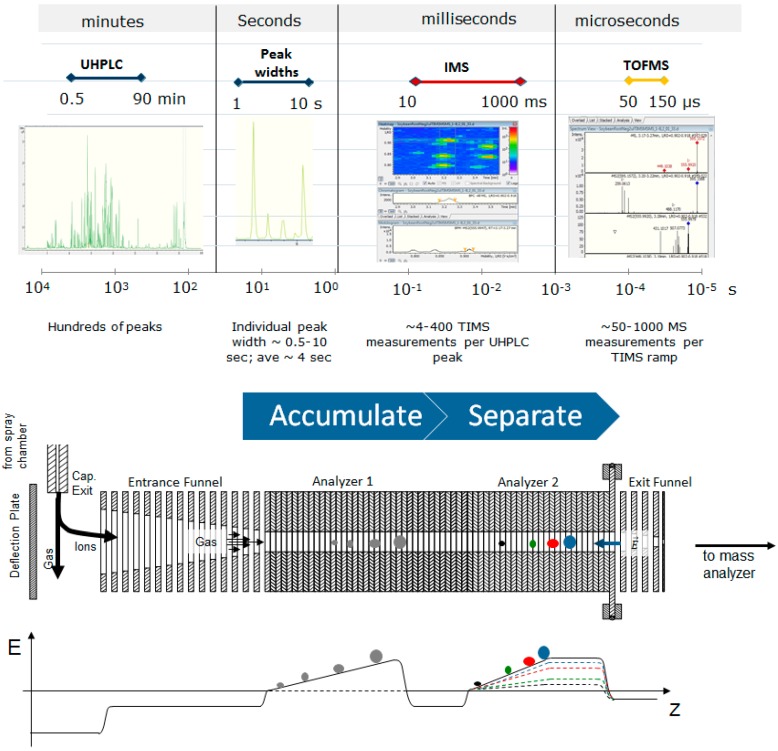Figure 1.
Trapped ion mobility spectrometry (TIMS) is temporally well aligned with UHPLC as a second dimensional separation technology. TIMS also offers higher resolution and a high duty cycle. Ions from the source are pushed through the ion tunnel by a drift gas and opposed by an electric field gradient, in effect trapping them where those forces are equal on the ion. The two stages of the TIMS allow for accumulation of ions in analyzer 1 while separation and mobility measurements take place in analyzer 2. This results in a near 100% duty cycle. As the electric field gradient is lowered, the ions are released from the second analyzer towards the time-of-flight (TOF) detector.

